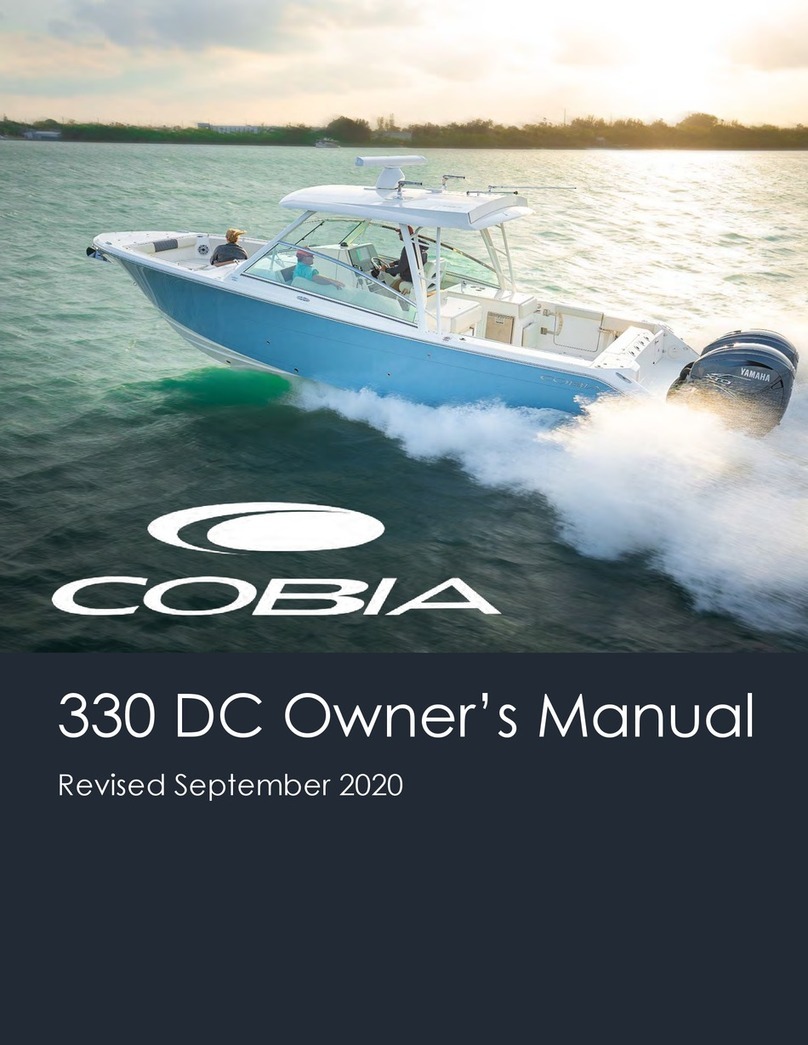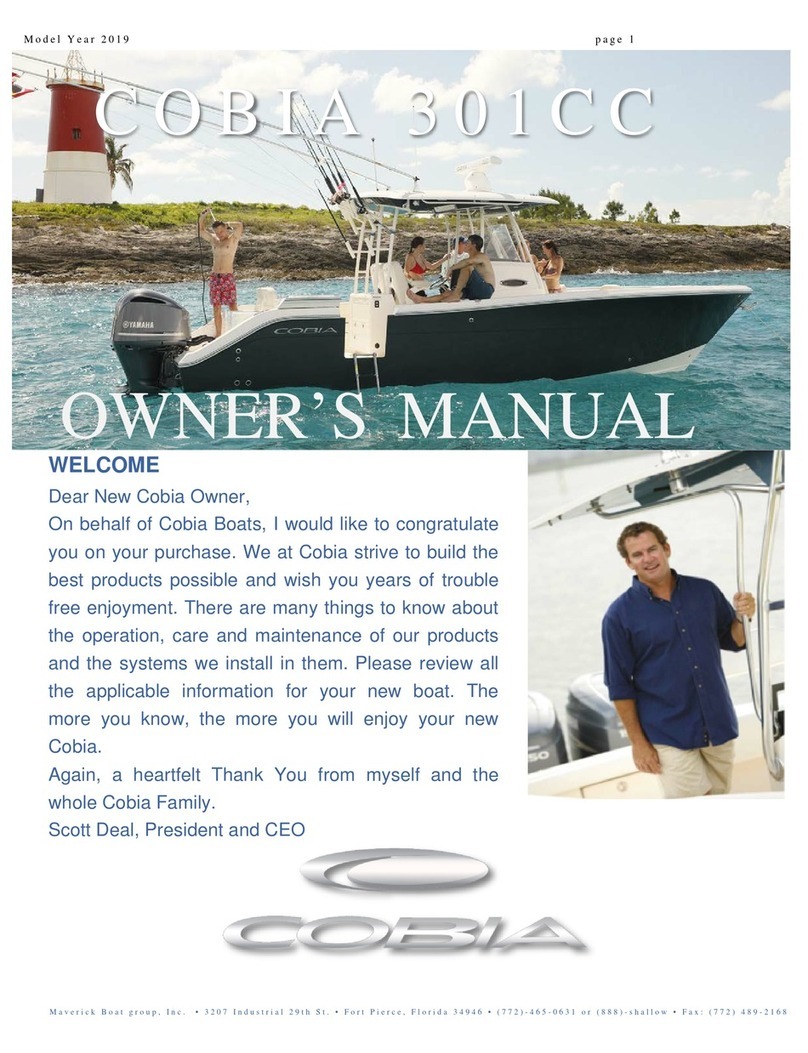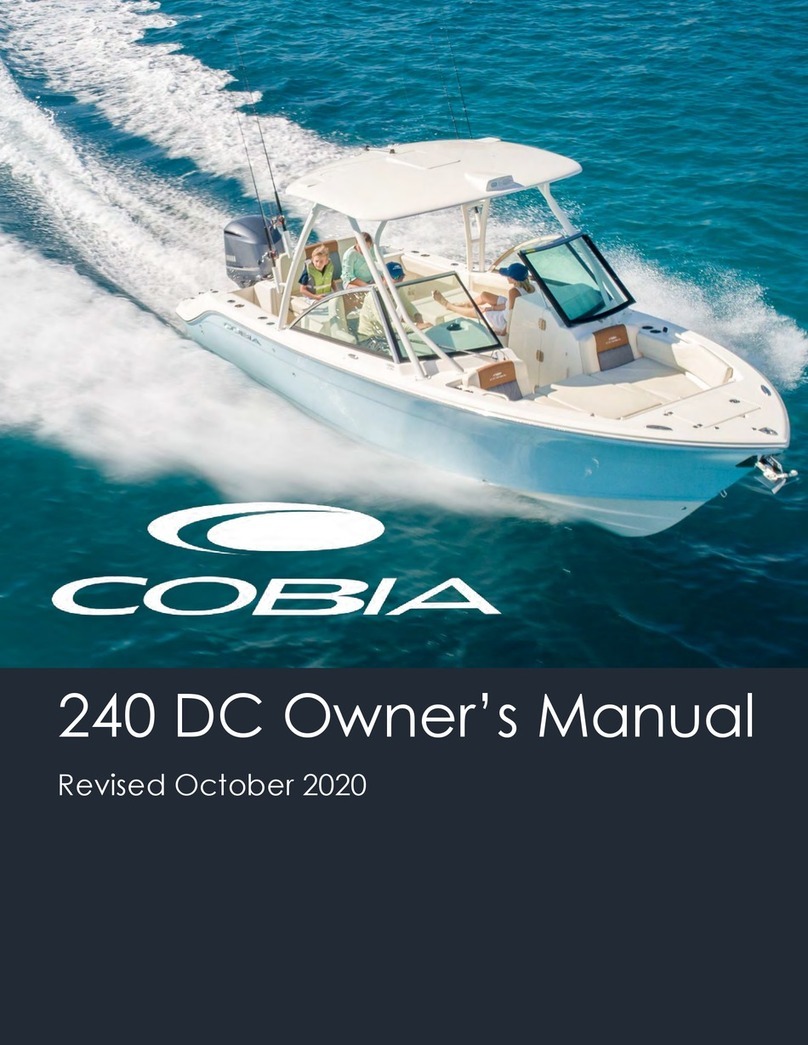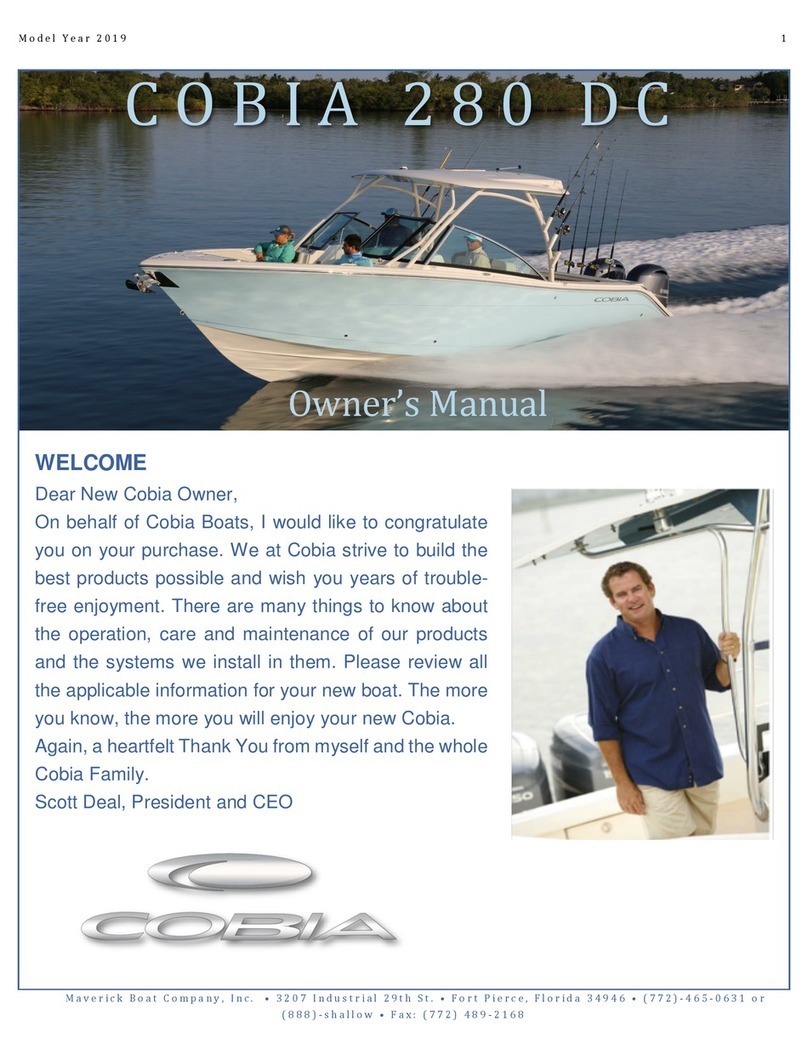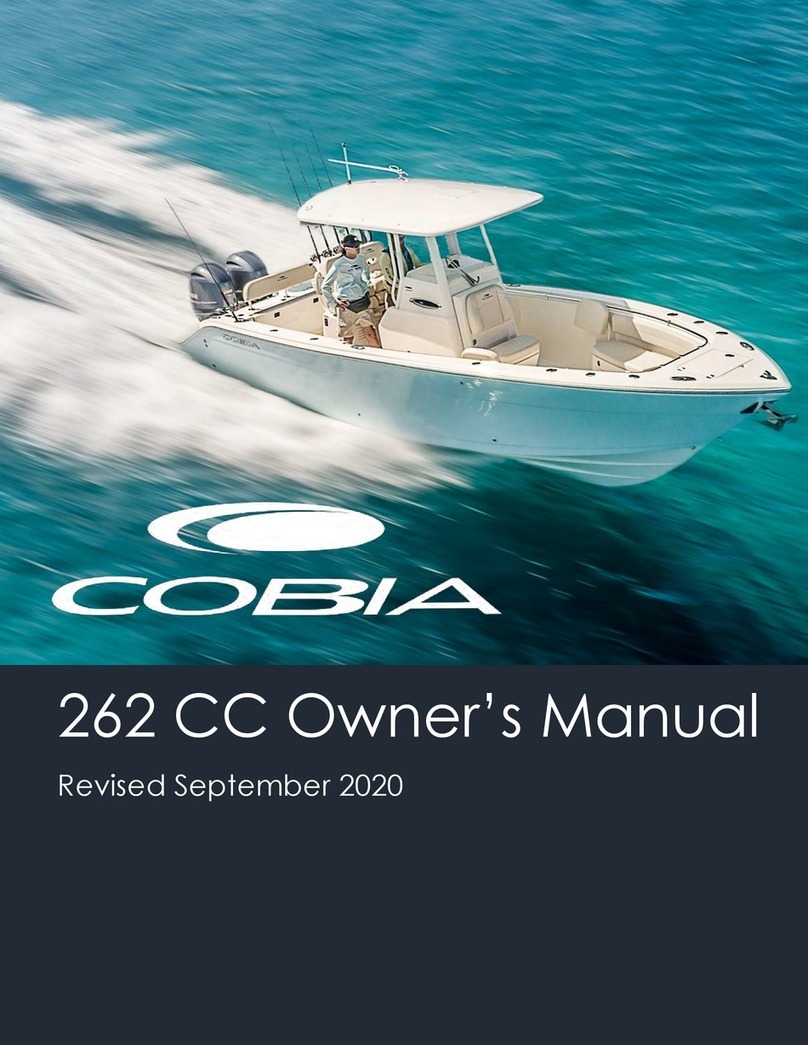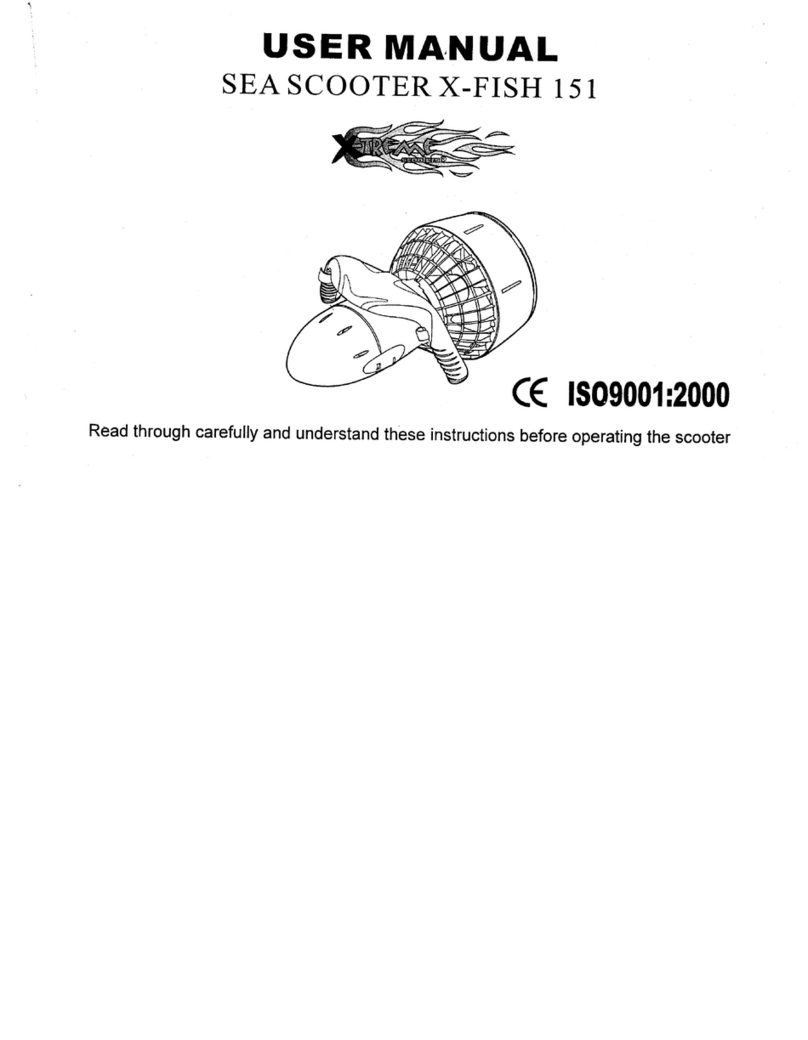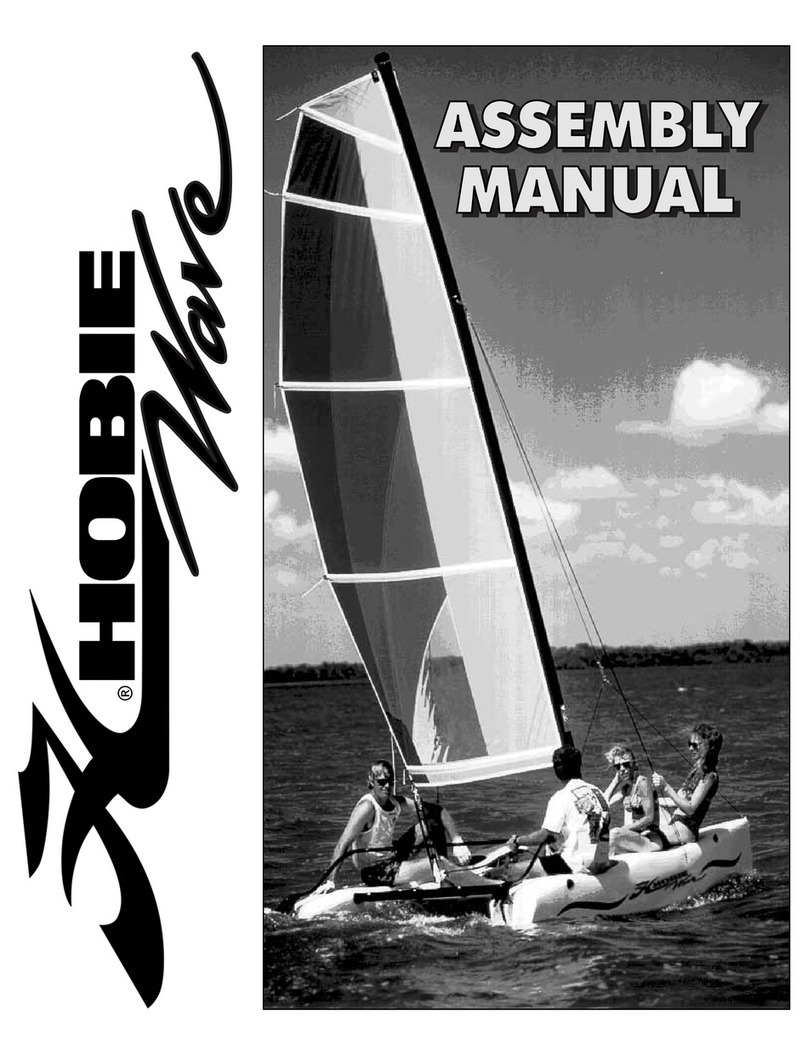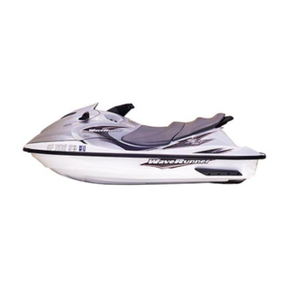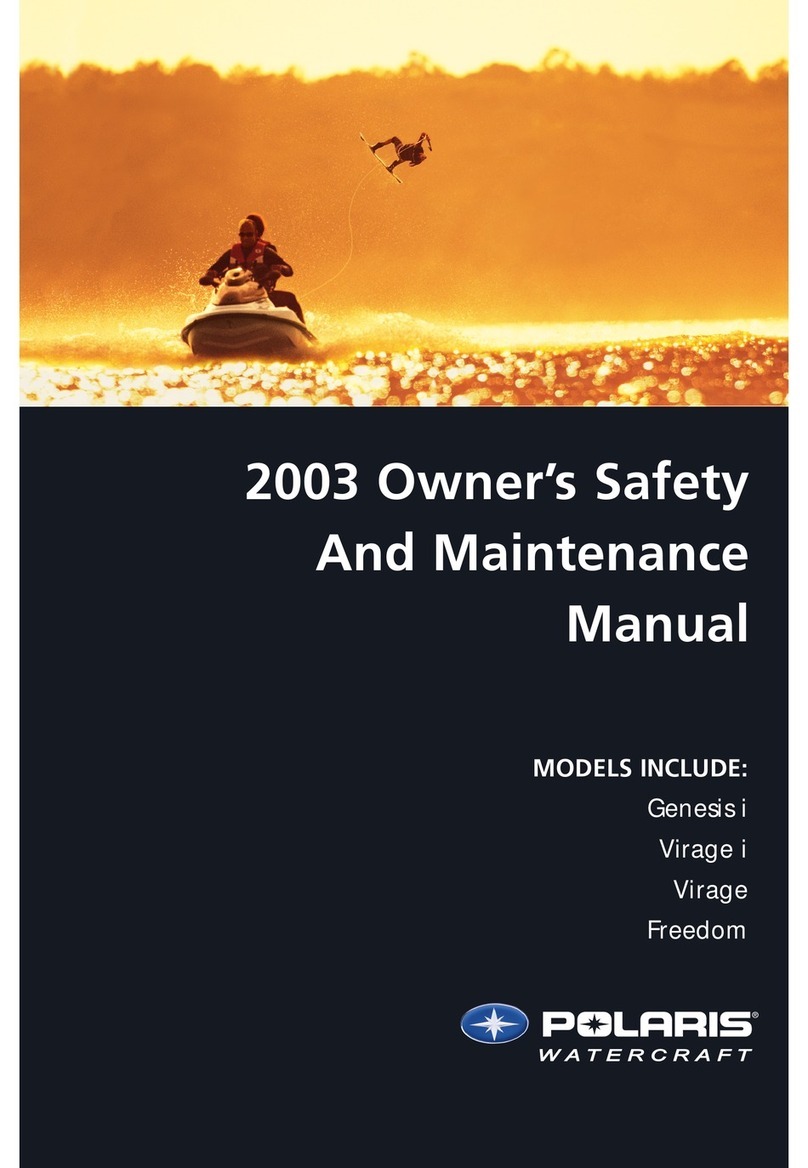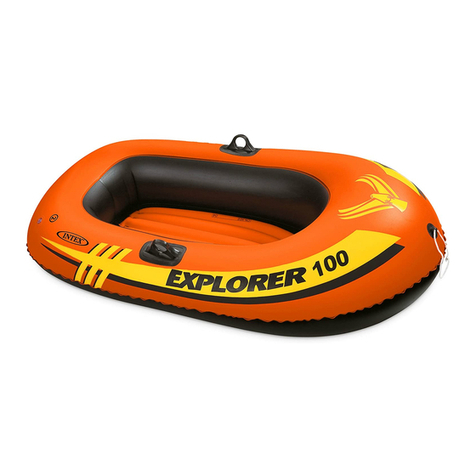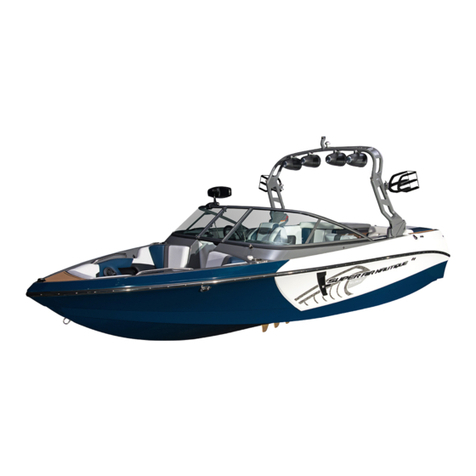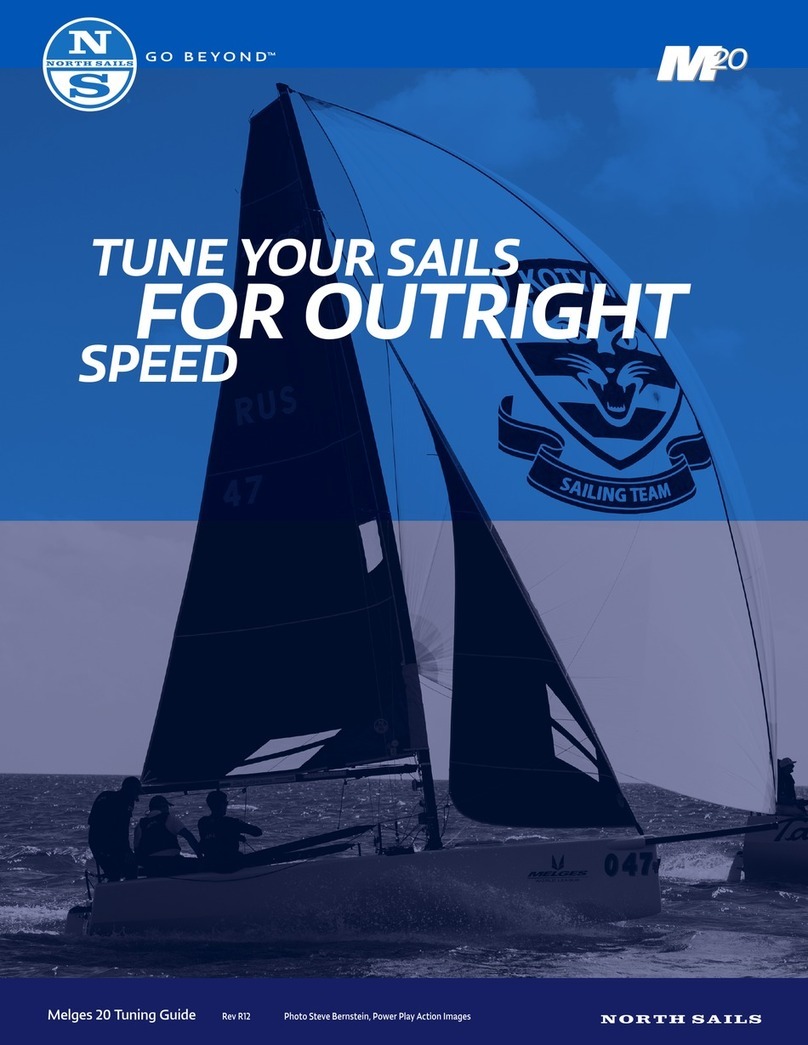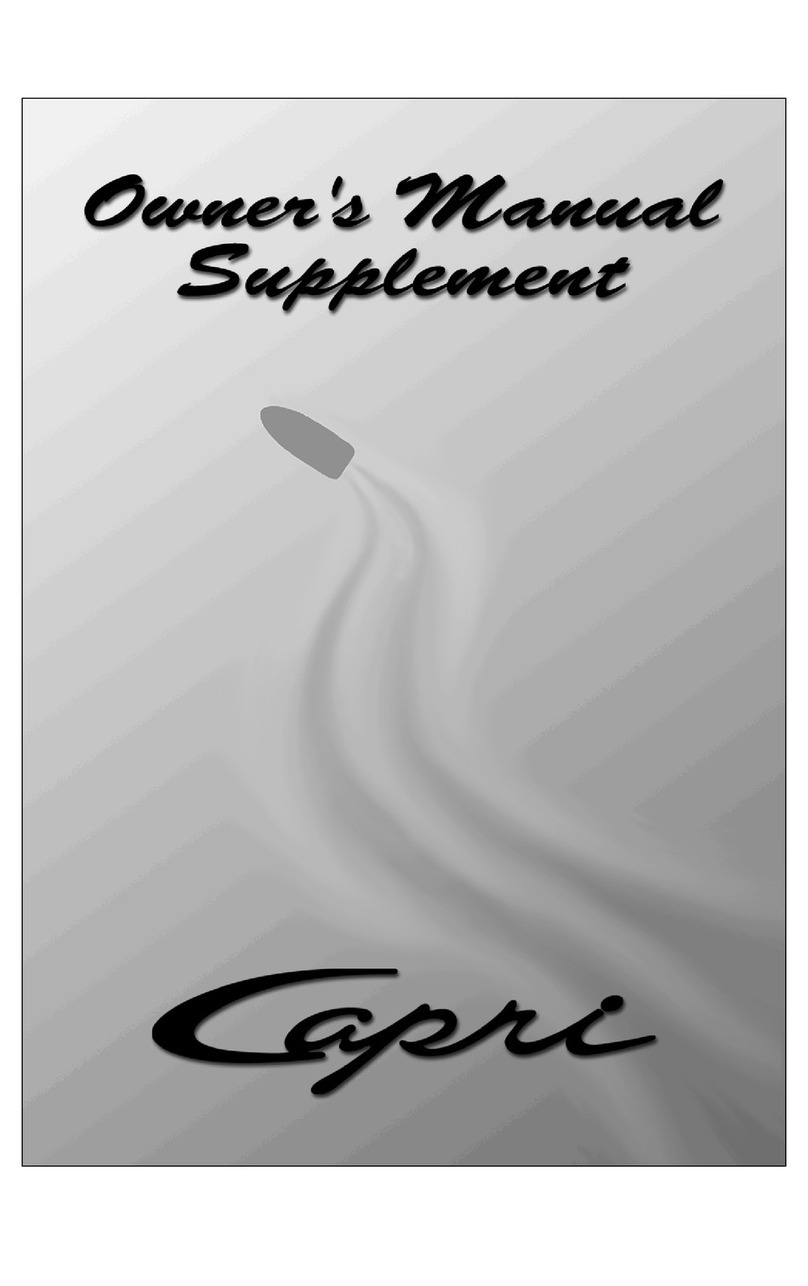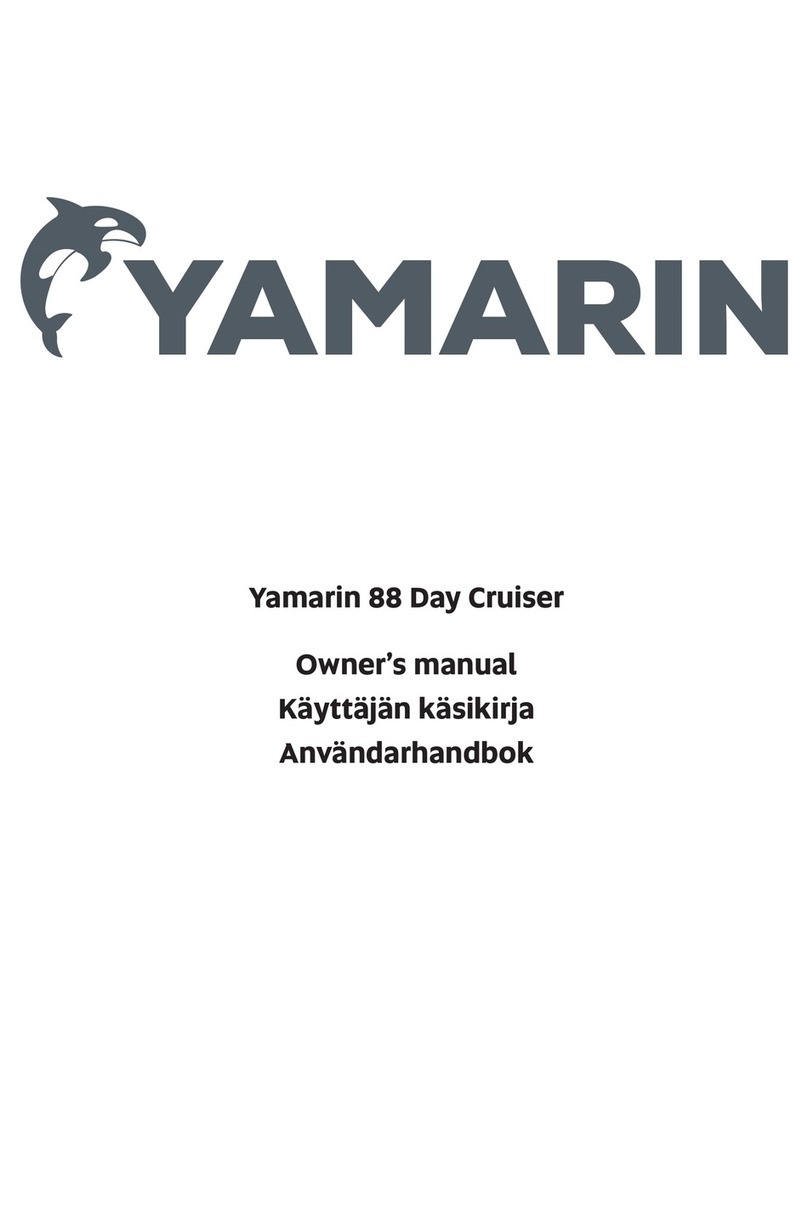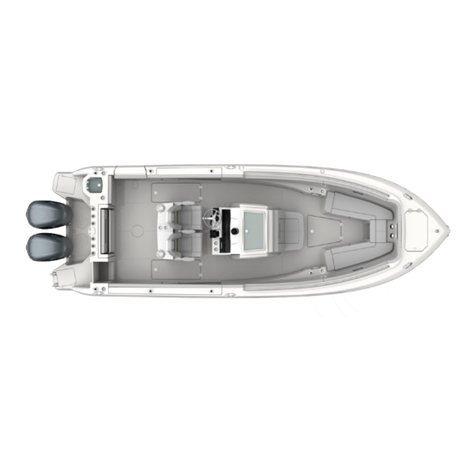COBIA 344 CC User manual

Model Year 2016 page !1
Maverick Boat Company, Inc. • 3207 Industrial 29th St. • Fort Pierce,
Florida 34946 • (772)-465-0631 or (888)-shallow • Fax: (772) 489-2168
COBIA 344 CC
Owner’s Manual
WELCOME
Dear New Cobia Owner,
On behalf of Cobia Boats, I would like to congratulate
you on your purchase. We at Cobia strive to build the
best products possible and wish you years of trouble
free enjoyment. There are many things to know about
the operation, care and maintenance of our products
and the systems we install in them. Please review all
the applicable information for your new boat. The more
you know, the more you will enjoy your new Cobia.
Again, a heartfelt Thank You from myself and the whole
Cobia Family.

Model Year 2016 page !2
Maverick Boat Company, Inc. • 3207 Industrial 29th St. • Fort Pierce,
Florida 34946 • (772)-465-0631 or (888)-shallow • Fax: (772) 489-2168
TABLE OF CONTENTS
Specifications...............................................................................2
Pre Operation Check List.............................................................3
Yamaha Engine Break-In Periods................................................4
Engine Stop Switch......................................................................4
Switch Panels & Helm..................................................................5
Command Link Plus Display........................................................5
Fuel/Water Separators.................................................................6
Garboard Drain Plug....................................................................6
Bilge System................................................................................7
Bilge
Access…………………………………………………………………8
Ball Valves, Deckdrain System, & Livewell Pump
Assembly……………………………………………………………..9
Head Systems.......................................................................10-12
Stainless Boarding Ladder.........................................................13
Props..........................................................................................13
Fuel System...............................................................................14
Steering.................................................................................15-16
Self Bailing Cockpit....................................................................17
Livewell System....................................................................17-18
Rod Lockers..........................................................................19-20
Fish Lockers...............................................................................20
Macerator Access & Operation……………………………………21
Anchor Locker / Rode Storage...................................................22
Trim
Tabs…………………………………………………………………..22
Saltwater
Washdown…………………………………………………………23
Freshwater
System……………………………………………………………….24
Battery Location/ Charger.......................................................25
Leaning Post and Tackle Station……………………………….26
Seating..............................................................................27-28
Cockpit Bolsters......................................................................29
Tuna/BoardingDoor..…………………………………………….29
Pop-up Bow Light, Cleats, and Rope Chocks………………..30
Retractable Bow Table............................................................31
Hard Top.................................................................................32
Optional Stereo System..........................................................33
Optional Windlass System…………………………………..33-34
Battery Switch and Breaker Panel……………………………..35
Wiring System Diagrams...................................................36-52
Warranty.................................................................................53
344 SPECIFICATIONS
L.O.A............................................................34’ 04”
BEAM...........................................................11’ 02”
DRAFT................................................................24”
WEIGHT W/O ENGINE…………………8,600 LBS.
FUEL CAPACITY......................................320 GAL.
DEADRISE @ TRANSOM.......................21.6 DEG
MAXIMUM H.P............................................900 HP
TRANSOM HEIGHT……....................30”CENTER,
26”OUTBOARD

Model Year 2016 page !3
Maverick Boat Company, Inc. • 3207 Industrial 29th St. • Fort Pierce,
Florida 34946 • (772)-465-0631 or (888)-shallow • Fax: (772) 489-2168
BOATING SAFETY CHECKLIST
*******PRE OPERATION CHECK LIST*******
(we recommend that you remove the checklist and store at the helm station)

Model Year 2016 page !4
Maverick Boat Company, Inc. • 3207 Industrial 29th St. • Fort Pierce,
Florida 34946 • (772)-465-0631 or (888)-shallow • Fax: (772) 489-2168
ENGINES
Engine stop switch (above)
Engine Break-In Period
New engines require a period of break-in to allow
the surfaces of the moving parts to mate evenly.
Different engines require different break-in periods
and methods. For instructions on break in
methods, refer to your Yamaha Engine Owner’s
Manual for the correct break-in procedures and
times for your model engines.
Engine Stop Switch
If activated, the spring loaded engine stop switch
will automatically shut down the engine during
emergency situations to prevent uncontrolled or
unattended operation. Certain emergency
conditions (e.g., turbulent water, wakes,
unanticipated movement) may impair a person’s
ability to operate the craft safely. The switch,
located on the helm, must have the safety lanyard
attached at its base. This activates the protective
shutdown circuitry.
Securely attach the other end of the lanyard to the
operator of the boat. If the operator moves, falls or
is at an unsafe distance from the steering wheel, tension
on the lanyard will pull it from the switch. When the
lanyard is removed, the engine stop switch is released
and automatic engine shutdown occurs.
Engine Stop Switch
An engine stop switch system that is not used or does not function properly can cause death or serious injury.
DO NOT operate the boat if the engine stop switch system does not function properly. Go to a Cobia Dealer to
have this resolved immediately
The lanyard should be securely attached to the boat operator at all times that the
engine is on.

Model Year 2016 page !5
Maverick Boat Company, Inc. • 3207 Industrial 29th St. • Fort Pierce,
Florida 34946 • (772)-465-0631 or (888)-shallow • Fax: (772) 489-2168
SWITCH AND INSTRUMENT PANEL
Switch Panel & Helm
At the helm of your Cobia, you have a main switch
panel, which is located above the engine starter
buttons. This panel controls your lights, horn,
accessories, livewell, and your bilge. When a button is
in the “on” position, it is illuminated. This alerts you that
the associated accessory should be functioning and
also reminds you to turn it off during boat shutdown.
When the “NAV” light switch is in the “on” position, the
labels for the switches will be illuminated. To the left of
the throttle you have your two trim tab switches. (Refer
to page 22 for trim tab for operation.)
Helm Station
Compass
Command Link Plus Display
Command Link Plus Display come standard on your new Cobia is are an upgrade from the Command Link gauges. The
Command Link Plus Display allows access to more information on a single display. Displays are user-selectable so you can
choose the functions displayed and in what order. Refer to your yamaha owners manual for operation and available features.
Twins
Triple

Model Year 2016 page !6
Maverick Boat Company, Inc. • 3207 Industrial 29th St. • Fort Pierce,
Florida 34946 • (772)-465-0631 or (888)-shallow • Fax: (772) 489-2168
FUEL-WATER
Fuel/Water Separator
Fuel-Water Separator
Yamaha Fuel - Water Separators are installed
between the fuel tank and engines on the 344. The
new, improved 10-micron filters provide superior
filtration ahead of the engine's onboard filters and
injectors. Large filtering and water capture areas
maximize filtration while maintaining adequate flow
rate for larger engines.
Each engine's fuel separator can be checked by
unscrewing the canister from the mounting bracket
and dumping it into an approved waste collection
device. If there appears to be an excessive amount of
water, the filter component should be replaced. See
your authorized Cobia Dealer for replacement parts.
The micron filters and heads are pictured to the right .
They are mounted inside an access panel located on
the starboard side of the bilge access hatch. The fuel
system primer bulbs are located next to each filter.
(Refer to page 14 for more information on the fuel
system.)
Maintenance Note
Yamaha recommends replacing the 10- micron fuel filter on new boats after the first 10 hours or 1 month of
operation and every 50 hours or every 6 months thereafter. In areas of high humidity where water in fuel supplies is a
problem or extensive engine operation occurs, more frequent replacement may be necessary.
Garboard Drain Plug
The garboard drain plug is the small metal plug located at
the lowest point on the hull, at the bottom of the transom
right above the keel. The drain has been designed so that
it can be loosened by hand while the hull is out of the
water for draining. This allows the plug to stay in contact
with the surrounding frame so you’ll never misplace or
lose it. You can completely remove the insert by pulling
back and continue turning in a counter clockwise motion.
It is manufactured with a rubber seal in place to ensure
you bilge is watertight. Always make sure before putting
the boat in the water that this plug is hand tightened
firmly. Excess water in the bilge may be an indication of a
problem with this plug or the automatic bilge pump. Refer
to page 6 of this Owner’s Manual for information on your
boats bilge system.
Filter Access Panel

Model Year 2016 page !7
Maverick Boat Company, Inc. • 3207 Industrial 29th St. • Fort Pierce,
Florida 34946 • (772)-465-0631 or (888)-shallow • Fax: (772) 489-2168
BILGE
Bilge
The bilge of your Cobia should always be checked before
and after a launch. While checking the bilge, note that a
small amount of water in the bilge is normal. However, a
large amount of water or any signs of fuel or oil requires
immediate attention. If such a situation exists, the boat
should be taken to a certified marine technician
immediately. Never pump fuel or oil overboard while
your boat is in the water.
Large quantities of water in the bilge may be an indication
of a leak or that the bilge pump and/or automatic float
switch is not functioning properly due to a jam, clog or
electrical issue. The automatic float switches are wired to
the hot side of the battery switch through the “BILGE”
fuse at the battery switch panel. When functioning
properly, the float switch activates the bilge pump to pump
water overboard once water in the bilge reaches a level
that submerges the switch.
If your bilge pump does not come on when the float
switch is submerged or lifted to stimulate being
submerged, attempt to manually turn on the bilge pump
on your switch panel. If the bilge pump comes on and
evacuates the water, it is likely that the float switch is not
functioning properly. If the bilge pump does not come on
via the switch panel, check the breaker panel inside the
console to see if the breaker has been tripped (for
additional information see breaker panel on page 35). If
the breaker has been tripped, reset it by pressing the
breaker button, and turn the switch on again, listening for
the bilge pump to turn on.
If the bilge pump fails to turn on, turn the battery switch to the OFF position, then unhook the bilge pump from its cradle
by pressing the locking tab and twist the motor housing counter-clockwise. You will feel the pump release from the cradle.
The entire bilge pump and wiring should release from the cradle. After removing the pump, check the underside and
impeller areas for miscellaneous items that might clog the pump. If any obstructions are present remove the debris and
set the pump back into the cradle. Once set back in the cradle, press the pump down on the base then twist until the lock
button snaps it into place. Once this is completed you can try to turn the pump on again.
If the bilge pump still does not turn on, it likely needs to be replaced. It is not recommended to use your boat if the bilge
pump and/or float switch are not functioning properly.
Automatic Float Switches
Bilge Pumps

Model Year 2016 page !8
Maverick Boat Company, Inc. • 3207 Industrial 29th St. • Fort Pierce,
Florida 34946 • (772)-465-0631 or (888)-shallow • Fax: (772) 489-2168
BILGE ACCESS
Bilge Access
Hatch Control
Accessing the bilge in the 344 is made easy. First, locate the controls for the electronic lift assist, labelled “hatch”, mounted on
the starboard side of the tackle center. Next, press and hold the top button on the controls. This will cause the aft section to lift
revealing the bilge access. To lower the aft section simply press and hold the bottom button on the control panel until the aft
section is back into original position. Remember the electronic lift assist operates using the house battery system.
Bilge Access Open
Bilge Pumps

Model Year 2016 page !9
Maverick Boat Company, Inc. • 3207 Industrial 29th St. • Fort Pierce,
Florida 34946 • (772)-465-0631 or (888)-shallow • Fax: (772) 489-2168
SYSTEMS
THE LIVEWELL PUMP
ASSEMBLY IN THE
“OPEN” POSITION
Ball Valves
Ball valves can be used to serve several purposes. They
allow seawater to enter the boat, in the case of livewells,
and they also act as a safeguard to stop water from
entering. To tell which position a ball valve is in, open or
closed, look at the valve and determine the direction of
flow. When the ball valve handle is in the same position
as the direction of flow, the valve is in the “OPEN”
position. When the ball valve handle appears to cross the
direction of flow, the valve is in the “CLOSED” position.
The ball valves can be accessed in the bilge compartment
behind the aft seating.
344 Deckdrain System
The deck drain system is equipped with 1 1/2” thru hull
fittings through the aft port and starboard hull sides.
These fittings have to be installed lower than the drains in
the cockpit floor so that gravity will allow the cockpit to
drain free of water. This puts these fittings very close to
the water line of the hull. These drains are rigged with ball
valves that can be opened and closed to control the flow
of water. In the open position, these ball valves will allow
water to flow freely from the cockpit, thus making the boat
“self-bailing”. When closed, no water will be allowed to
travel to or from the cockpit.
344 Livewell Pump Assembly
The livewell pump assembly is composed of a scoop
strainer mounted to the bottom of the hull, a thru hull
fitting, ball valve assembly, and the pump. As you can
see, the ball valve assembly is in the “OPEN” position.
This is the correct position for the operation of the livewell
system.
Water Flow
CLOSED

Model Year 2016 page !10
Maverick Boat Company, Inc. • 3207 Industrial 29th St. • Fort Pierce,
Florida 34946 • (772)-465-0631 or (888)-shallow • Fax: (772) 489-2168
HEAD OPERATION
Head Unit
Inside the console is the head unit. There are steps that lead into the head unit which houses an electric head, fresh water
sink, with spray nozzle for rinsing off, switch panel for flushing head and on-off switch for the macerator. There is a DC
breaker panel inside (See page 35) and also two opening port hole windows. There is also access to the macerator, y-valve,
water intake and discharge for the toilet and holding tank, and another access to the forward bilge. (Refer to pages 11-12 for
more information on how to operate the full head system.)
Access to Forward Bilge Assembly
Head Console Access
China Head
DC Breaker Panel
Macerator Switch

Model Year 2016 page !11
Maverick Boat Company, Inc. • 3207 Industrial 29th St. • Fort Pierce,
Florida 34946 • (772)-465-0631 or (888)-shallow • Fax: (772) 489-2168
ELECTRIC HEAD
Electric Head
The macerator is to be used only with direct discharge. Do not use macerator for dockside pump out of the holding tank. To
flush the head, make sure the intake valve is in the open position. The intake valve is located in the forward bilge access in
the console on the aft bulkhead. This supplies your head with the water it will need to operate correctly. Then press the toilet
switch and the waste is pushed into the holding tank. The macerator has nothing to do with the flushing of the toilet. The
macerator is only used for overboard discharge while outside the legal dumping limits. To discharge outside legal limits, open
the thru hull discharge valve located directly across from the intake valve located in the forward bilge access, turn the Y-Valve
to the direction of the macerator, and flip macerator switch to the “ON” position. The Y-Valve is also located in the forward
bilge access.
Head System Diagram
Discharge Valve
Intake Valve

Model Year 2016 page !12
Maverick Boat Company, Inc. • 3207 Industrial 29th St. • Fort Pierce,
Florida 34946 • (772)-465-0631 or (888)-shallow • Fax: (772) 489-2168
ELECTRIC HEAD (CONT.)
Electric Head Continued
The Jabsco Y-Valve is designed to provide flexibility of onboard
waste management by diverting waste either to the dockside pump-
out fitting or directly overboard where legal to do so. Check local
and Federal regulations to determine where direct overboard
discharge of untreated waste is permitted.
Some near shore areas and inland areas are designated as "No-
Discharge Zones" where the discharge of any onboard waste, even
treated waste is strictly prohibited. Many of these areas require a
waste retention system that can be positively secured in an
onboard retention mode.
The Jabsco Y- Valve accommodates this requirement by providing
the ability to add a padlock that secures the selector handle in
either direction to ensure waste is directed to an onboard holding
tank. The Y-Valve may also be used to direct waste from a holding tank
to a waste deck plate for removal by a dockside pump-out facility.
Toilet & Macerator Switch Located on the
Starboard Aft Wall of the Console
Macerator Used for Pumping Direct
Overboard Discharge
Y-Valve Used to Direct Waste Discharge

Model Year 2016 page !13
Maverick Boat Company, Inc. • 3207 Industrial 29th St. • Fort Pierce,
Florida 34946 • (772)-465-0631 or (888)-shallow • Fax: (772) 489-2168
LADDER AND PROPS
Props
Prop selection on your Cobia is determined by your local
Cobia Dealer, but all props are based on recommendations
from Cobia Boat Company and Yamaha Marine in order to
give your boat maximum overall performance. The needs of
your prop will determine the prop design and size that best
fits your performance requirements.
Always inspect the engine and prop prior to launching your
boat with the engine off. Key prop issues include tangled
fishing line or other types of debris, cracked blades or fluid
leaking out of the seal. Look for fishing line tangled around
the prop or lower unit seal. Consult your Yamaha’s
Owner’s Manual to address these issues.
No passenger should attempt to enter or exit the boat by the ladder or by any other means
while the engine is on.
Stainless Boarding Ladder
This Cobia model comes standard with a telescoping stainless
steel boarding ladder integrated into the port aft platform area.
This provides a stepping area while the ladder is in the up
position as shown below. Once the ladder is down and in the
extended position, close the lid cover for safe and secure entry
and exit via the ladder.

Model Year 2016 page !14
Maverick Boat Company, Inc. • 3207 Industrial 29th St. • Fort Pierce,
Florida 34946 • (772)-465-0631 or (888)-shallow • Fax: (772) 489-2168
FUEL SYSTEM
FUEL SYSTEM DIAGRAM
FUEL SYSTEM
The Cobia 344 CC comes equipped with a 320 gallon fuel cell stationed below the
leaning post between the stringer system. There are two fuel fill receptacles, one on
the port gunnel and one on the starboard gunnel. Every fuel tank is pressure tested
at the factory before and after installation. Should you experience any fuel related
problems or suspect problems with the fuel system, immediately take your boat to a
Cobia Dealer. The primer bulbs are located by the transom gate inside the starboard
access hatch.
CAUTION—Do not smoke while filling the tank. Be sure to turn off the engines and all electrical
equipment when fueling the boat to prevent accidental discharges of static electricity. Use only the
recommended gasoline (see Yamaha’s Owner’s Manual). Do not use fuels with alcohol or alcohol

Model Year 2016 page !15
Maverick Boat Company, Inc. • 3207 Industrial 29th St. • Fort Pierce,
Florida 34946 • (772)-465-0631 or (888)-shallow • Fax: (772) 489-2168
STEERING
Optimus Electronic Power Steering
The key components to the Optimus Electronic Power Steering System (EPS) are the patented Optimus EPS electronic helm
that connects via CAN Bus to a Pump Control Module (PCM) that operates individual hydraulic pumps. The pumps are
connected to specially engineered electro-hydraulic “SmartCylinders” that control individual movement of the outboard
engines. The Optimus EPS system replaces the traditional hydraulic steering system without the need for tie bars. Both the
Pump Control Module and the hydraulic pumps can be found in the in floor lazarette mounted on the starboard wall.
***FOR ADDITIONAL INFORMATION REGARDING OPTIMUS ELECTRONIC POWER STEERING SEE SEASTAR
OWNERS MANUAL LOCATED IN OWNERS BAG***
Hydraulic Pump
Pump Control Module

Model Year 2016 page !16
Maverick Boat Company, Inc. • 3207 Industrial 29th St. • Fort Pierce,
Florida 34946 • (772)-465-0631 or (888)-shallow • Fax: (772) 489-2168
STEERING
Optimus Joystick Control System (Optional)
Optimus 360 by SeaStar uses state-of-the-art electronics to provide easy 360-degree maneuvering capabilities when docking,
negotiating crowded areas or loading a vessel onto a trailer. Even novice boaters using the Optimus 360 Joystick Control
System can confidently move the boat forward, backwards, diagonally, rotate it on its own axis, or even move sideways to
accomplish tricky docking maneuvers. As the operator easily moves the joystick, the SmartCylinders respond instantly to
independently steer each outboard, engage forward/neutral/reverse gears and apply throttle as needed to move the boat
exactly where the operator wants it to go. The joystick control in located on the starboard side of the helm.
***FOR ADDITIONAL INFORMATION SEE SEASTAR OWNERS MANUAL LOCATED IN OWNERS BAG***
Optimus Joystick Control

Model Year 2016 page !17
Maverick Boat Company, Inc. • 3207 Industrial 29th St. • Fort Pierce,
Florida 34946 • (772)-465-0631 or (888)-shallow • Fax: (772) 489-2168
SELF-BAILING COCKPIT & LIVEWELL
Self Bailing Cockpit
The cockpit is designed to be self-bailing, meaning that all
the water that comes into the cockpit will be directly
drained overboard. This keeps the boat from acquiring
standing water and allows the boat to drain at all times,
including while the boat is docked.
Water drains out of the cockpit through two aft cockpit
drains located at the far aft cockpit floor on both the port
and starboard sides. Each side drains overboard through
the side of the hull independently. None of this water is
drained into the bilge. Refer to page 9 for operation of the
ball valve associated with this system. The ball valves are
located behind the aft seating.
The bilge is designed to drain any water entering the
inside of the hull. All hoses are sealed and double
clamped during construction. Continuous or periodic
running of the automatic bilge pump may be an indication
of a hose leak or break in a seal, and should be
investigated by a Cobia Dealer immediately. Refer to page
9 for further information regarding bilge pump operation
and maintenance.
Livewell System
The livewell system is designed to keep your baitfish alive and strong for as long as possible. This livewell provides a cool,
clean, and oxygenated environment that allows you to keep
your baitfish alive for long periods of time. To efficiently
operate your livewell, the following steps should be taken:
1. Open livewell hatch.
2. Install stand-up pipe snugly.
3. Ensure livewell pump ball valve is in open
position.
4. Press livewell switch located at the helm.
The livewell operates by pumping fresh seawater from the
pump through an aerator head into the livewell, keeping the
live well full at all times. This means that there is very little
wave action in your livewell, this helps to reduce the stress but
on your baitfish keeping them alive longer. Drainage is
achieved through the grate on the top of the standpipe. This constant drainage keeps up water flow and allows for the
removal of ammonia from the livewell, therefore extending the life of your baitfish even further. To drain the livewell, switch
off the pump, close pump ball valve, and remove standpipe.

Model Year 2016 page !18
Maverick Boat Company, Inc. • 3207 Industrial 29th St. • Fort Pierce,
Florida 34946 • (772)-465-0631 or (888)-shallow • Fax: (772) 489-2168
LIVEWELL SYSTEM
Livewell Pump Box (Optional)
The livewell pump box furthers the efficiency and effectiveness of your livewell system and is located directly under the
lazarette located in the rear cockpit. Water enters the pump box through two scoops located on the hull. As the box fills with
water any and all air is expelled from the box. This makes it so that only water (NoAir) enters the pumps or the livewell,
preventing any air locking issues. This both increases the life of your baitfish by further reducing wave action in your livewell
tanks and greatly extends the life of your livewell pumps.
The pump box contains three pumps labeled 1, 2, and 3. Pump 1 fills your port livewell tank while pump 2 fills your starboard
livewell tank, with pump 3 acting as a back up if either pump should fail. To use pump 3 turn the PVC ball valve into to open
position and locate the three-way valve located just aft of the PVC ball valve. Turn this valve either way to direct water into the
port livewell tank or the starboard live well tank.
***In case of emergency to prevent water from flowing into the pump box close the ball valves located in the bilge***
PVC Ball Valve

Model Year 2016 page !19
Maverick Boat Company, Inc. • 3207 Industrial 29th St. • Fort Pierce,
Florida 34946 • (772)-465-0631 or (888)-shallow • Fax: (772) 489-2168
ROD LOCKERS & FISH LOCKERS
Rod Racks
The 344 center console model comes standard with under gunnel rod racks on both the port and starboard sides.
These give you space to safely store an additional 6 rods for your fishing needs. These Racks can also double as
storage for various other items (as seen below).
Starboard Gunnel Storage Rack
Port Gunnel Storage Rack

Model Year 2016 page !20
Maverick Boat Company, Inc. • 3207 Industrial 29th St. • Fort Pierce,
Florida 34946 • (772)-465-0631 or (888)-shallow • Fax: (772) 489-2168
ROD LOCKERS & FISH LOCKERS
Port and Starboard Fish Lockers
The 344 CC has two 62 gallon fish lockers built into the aft cockpit floor on the port and starboard sides. These are
insulated and each one is connected to a macerator with the contents being dumped overboard. The macerators are
located in the bilge on the outboard sides of the stringers. They can be accessed through the bilge access hatch under
the aft seat. The switches for each fish box macerator are located on the switch panel left of the steering helm. These
can be operated independently of each other and the switches are labeled.
Port Fish Locker
Hidden Rod Lockers
The 344 CC comes standard with hidden lockable rod storage. The hidden rod storage is under the under the berth in
the walk down console, and easily houses six rods with more than enough room for additional storage.
Table of contents
Other COBIA Boat manuals
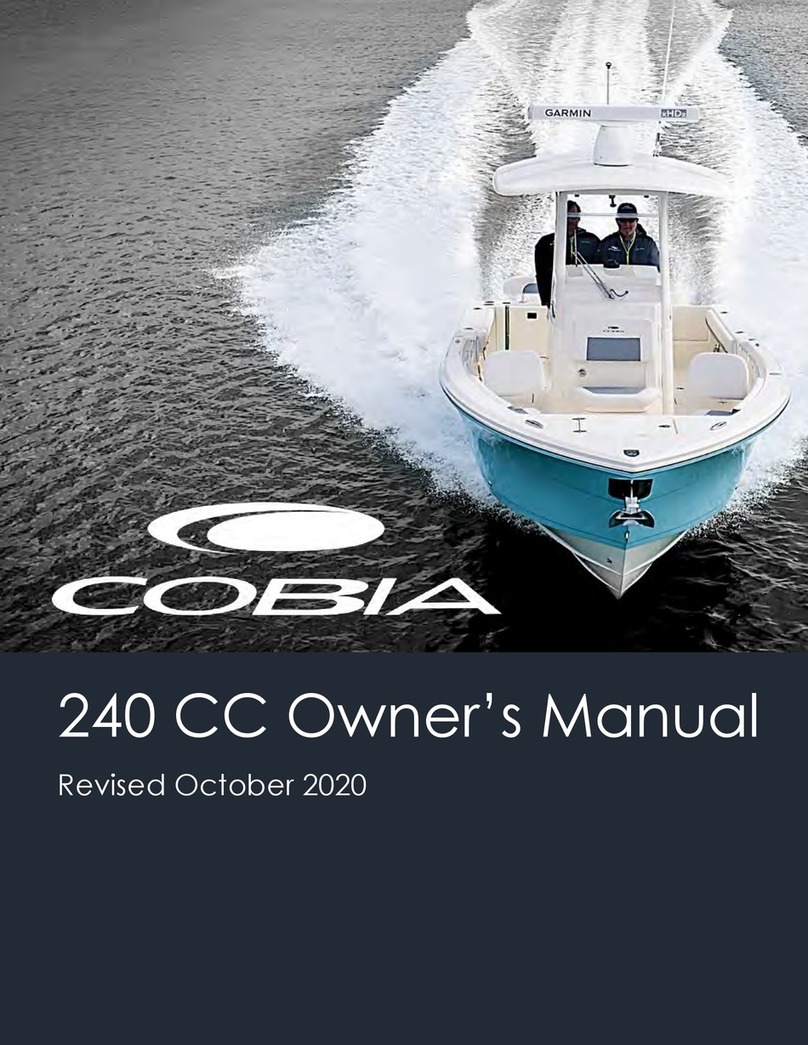
COBIA
COBIA 240 CC User manual
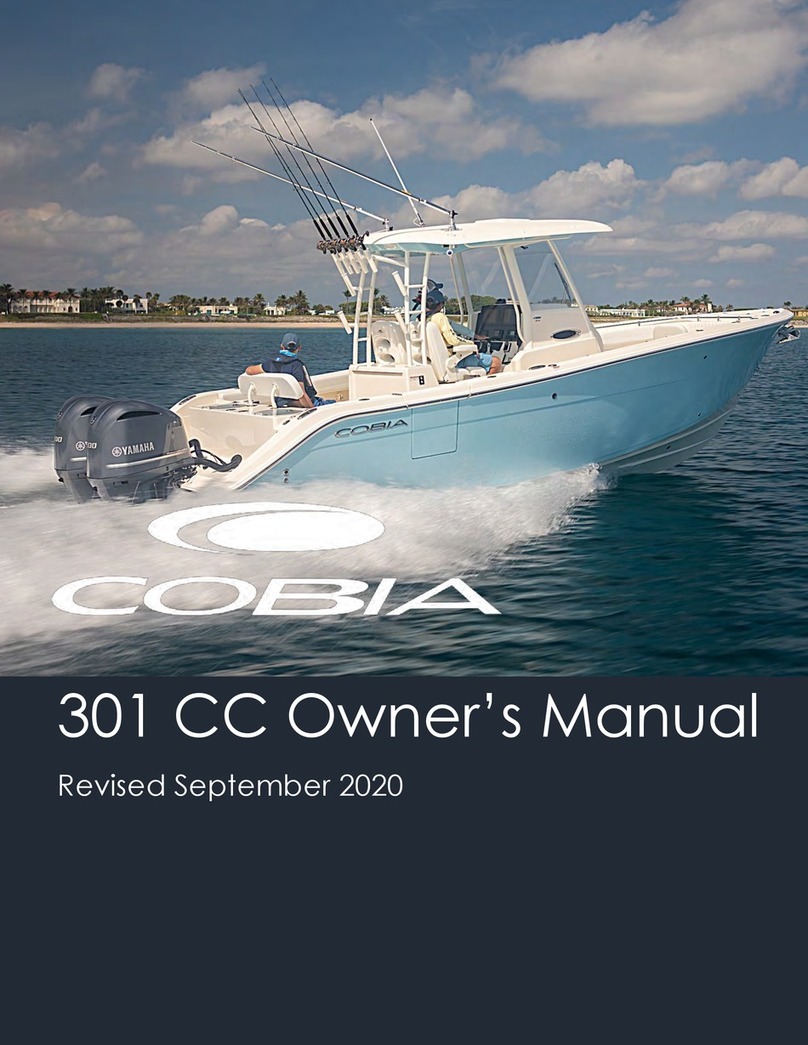
COBIA
COBIA 301CC User manual
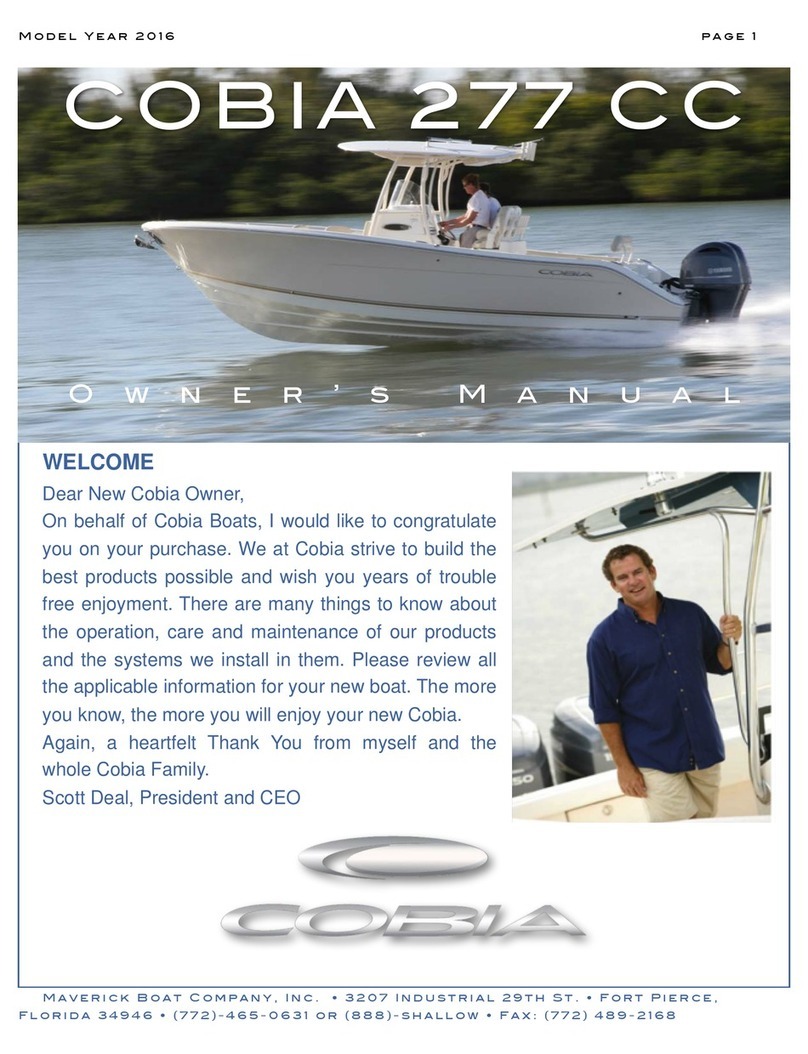
COBIA
COBIA 2016 277 CC User manual
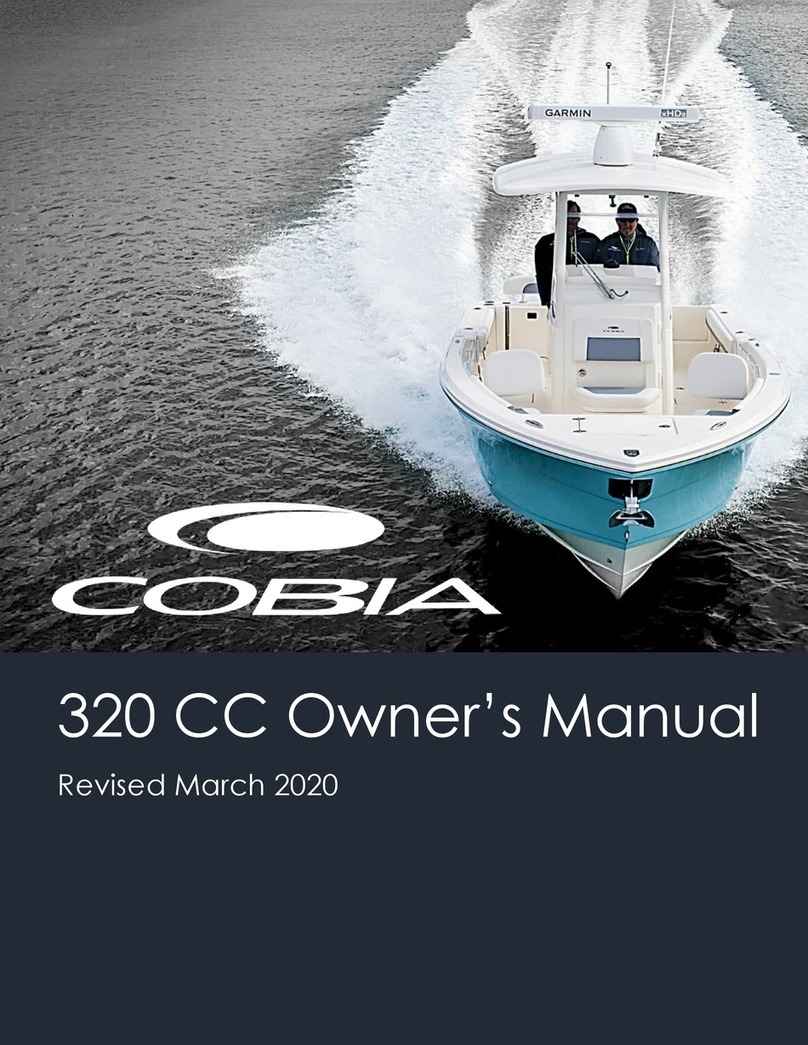
COBIA
COBIA 320 CC User manual
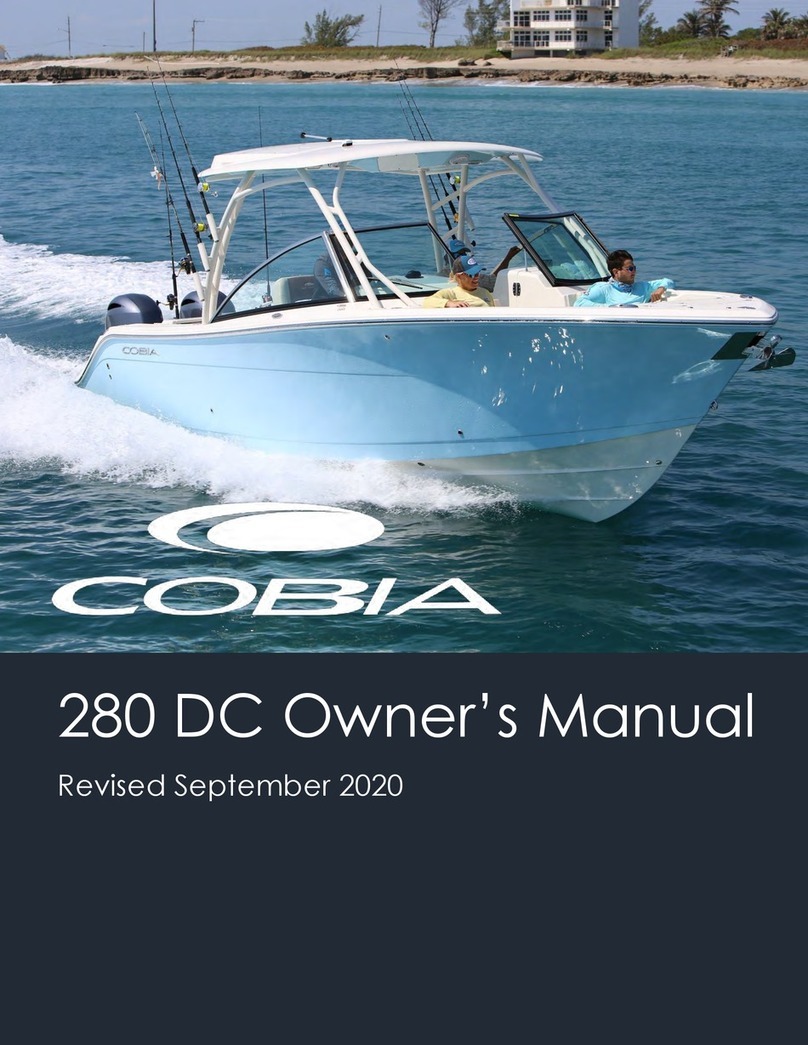
COBIA
COBIA 280 DC User manual

COBIA
COBIA 217 CC User manual
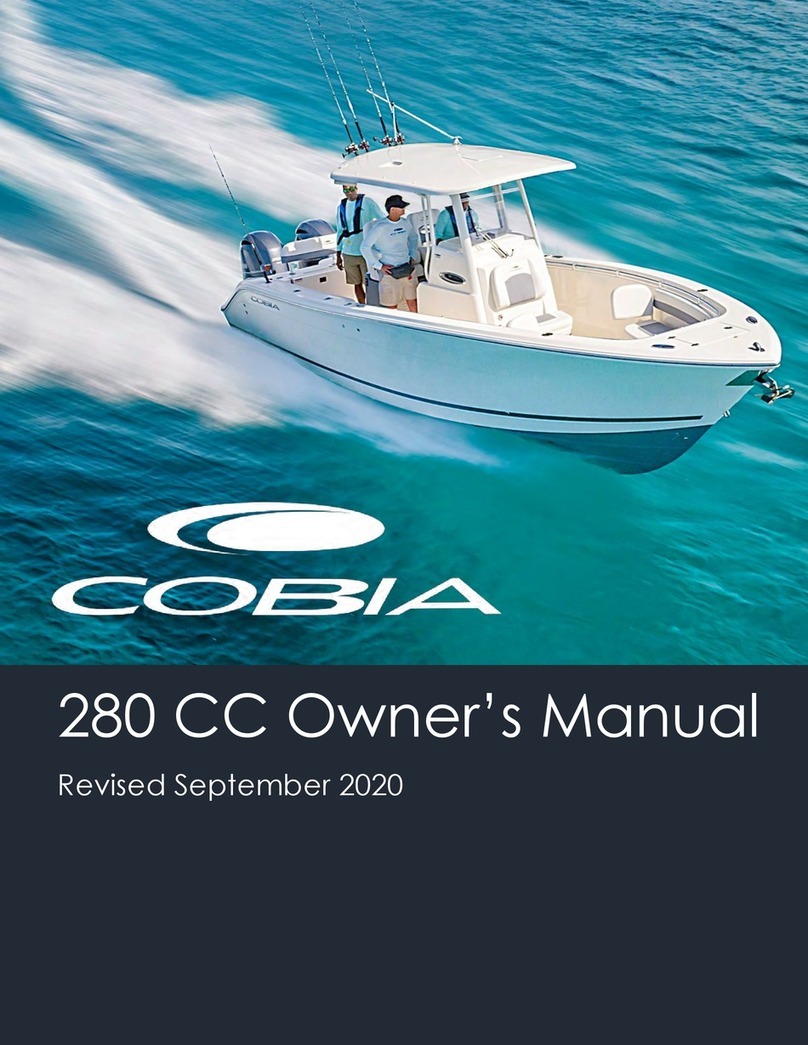
COBIA
COBIA 280 CC User manual

COBIA
COBIA 2012 296 CC User manual
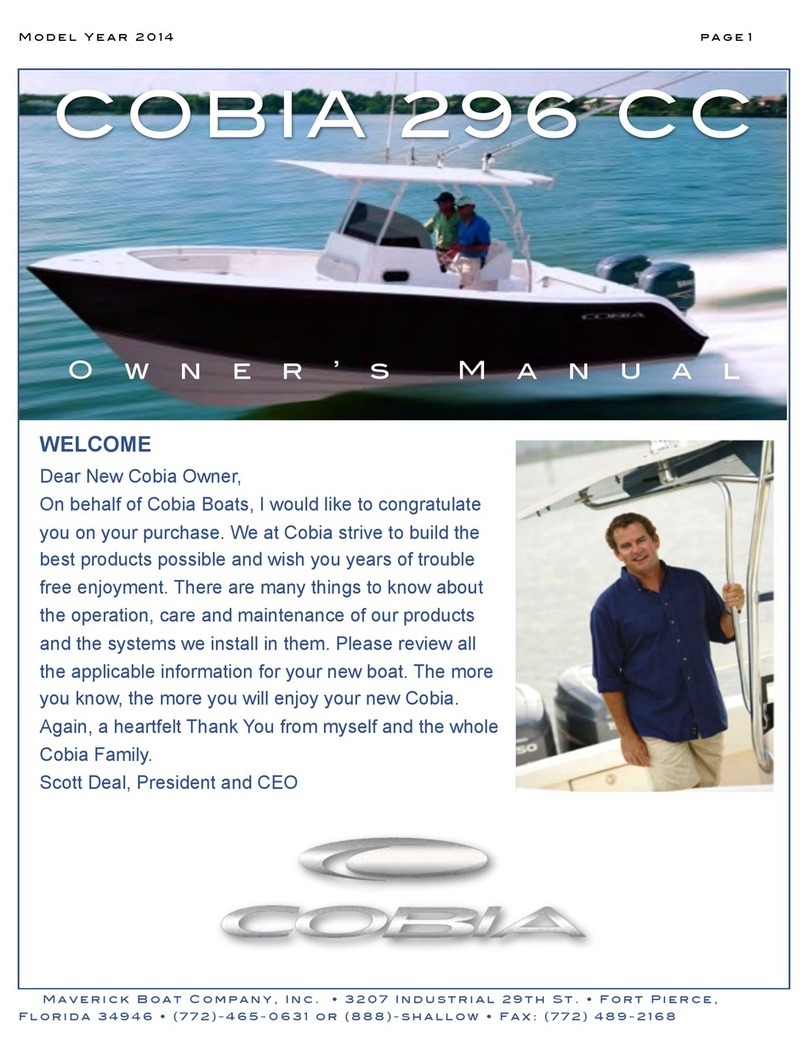
COBIA
COBIA 296 CC 2014 User manual
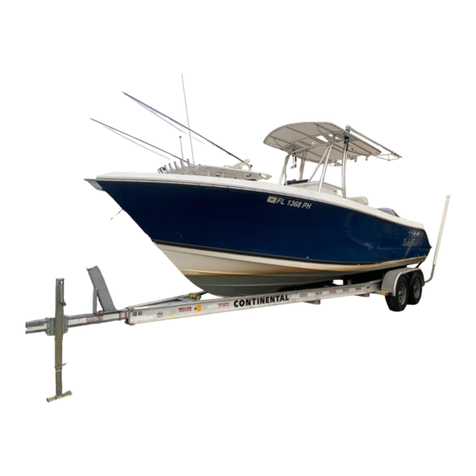
COBIA
COBIA 237 CC 2014 User manual
